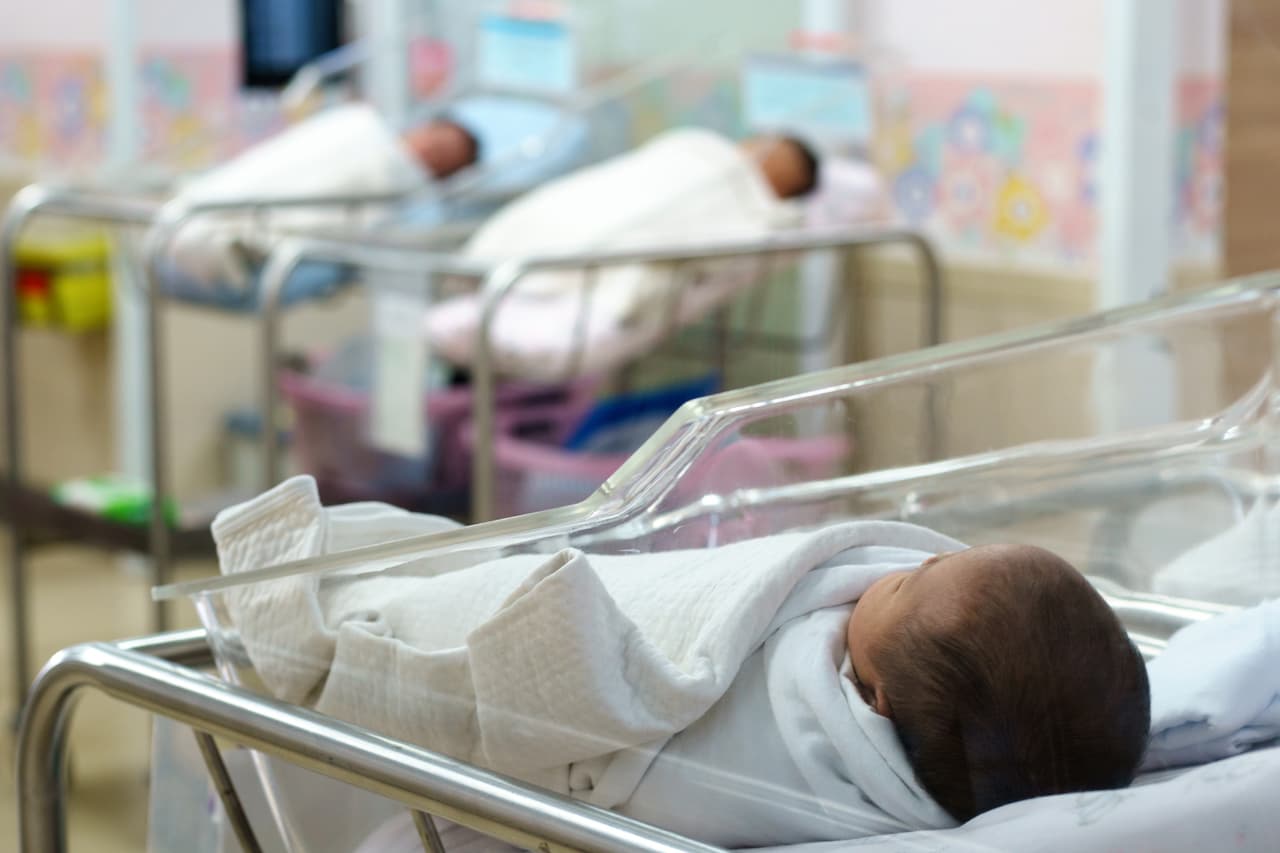
Brexit risk: More than a quarter of midwives at some London hospitals are EU nationals
More than a quarter of midwives in some London maternity units are from the European Union, new analysis reveals, while recruitment from the continent has plummeted since the Brexit vote.
Sixteen hospital trusts in the capital currently rely on the EU for more than 10% of their midwives, shows the most recent data from NHS Digital (see table below). And at two trusts - University College Hospitals (UCL) and North Middlesex University Hospital - more than a quarter of midwives are EU nationals.
Meanwhile just 33 midwives arrived from the European Economic Area (EEA) in the last year up to March 2018, which was a fall of nearly 90% from the year before the referendum, according to data from the Nursing and Midwifery Council. Over the same period, 234 EEA midwives left their posts. This drastic decline is sharpening an existing staffing crisis, with 3,500 midwife posts currently empty.
The referendum result has a major impact on recruitment, according to Danny Mortimer, chief executive of NHS Employers. “We have absolutely seen applications from within the EU drop,” he said. “Just plummet. Graphs show EU nurses arriving up until the referendum and within six months, it just drops like a stone.”
Brexit has put hospital recruiters in a difficult position, he added. “NHS employers haven’t known what to say when going out to recruit as they don’t know the implications in terms of EU staff’s migration status.”
UCL has stopped attempting to recruit from Europe despite having a vacancy rate of 9% across all clinical staff, it told the Bureau, because “because interest in coming to the UK appears to have declined.”
“A campaign to a mainland EU nation would only prove cost-effective for us if we recruited an intake of at least 15-20 candidates,” the spokesperson said.
Brexit is not the only factor driving the EU recruitment crisis, said Mortimer. A weak pound, London’s high cost of living and new language testing brought in by the government in 2016 have all put people off.
The overall picture of EU staff recruitment and retention is complex. Some London units highlighted that the number of EU midwives included a high percentage of Irish staff, who it is thought are more likely to remain in posts after Brexit than their counterparts from mainland Europe, because of Ireland and the UK’s shared values and lifestyle.
The strategic director of one London trust told us that his team had consciously stopped recruiting in the EU as European nurses and midwives only tended to stay around two years. Many arrived so they could gain experience in high-quality hospitals or for the life experience, but then - when faced with raising a family or setting down roots - returned home because of UK living costs or personal choice. The trust had particular success hiring nurses from the Philippines and India as they typically stayed longer.
Retaining midwives is a particular problem. Despite more than 2,000 people graduating in midwifery per year, the total number of midwives in England rose by just 67 in the last 12 month period, because of the amount of people leaving the profession. “We seem to need 30 graduates just to add the equivalent of one full-time NHS midwife,” said the latest State of Maternity Services report by the Royal College of Midwives.
The government has previously said it is “publicly committed to the EU Settlement Scheme which will allow any EU citizen currently residing in the UK to register to remain here indefinitely, with broadly the same rights as now.”
Such a promise does not appear to have reassured EU midwives and nurses that are already in England, or those considering joining the NHS. The Nursing and Midwifery Council (NMC) register shows new arrivals from the EEA fell by 88% between 2015/16 (the year before the Brexit referendum) and 2017/18, while the number leaving the register increased by a nearly a third.
Half of the EEA nationals leaving the register said that "Brexit has encouraged me to consider working outside the UK,” according to the NMC.
It’s less than ten months since the NHS emerged from the worst winter crisis on record. To take just one marker as an example, from December 2017 to March 2018 there were more trolley waits of more than four hours than the total amount in the same months from 2010 to 2014 combined.
On Monday, trade association NHS Providers said this winter would be even tougher. It highlighted the major role staff shortages have in driving this crisis, with a “double negative effect” - services cannot be expanded to the extent needed and existing staff are put under much greater pressure.
“Historically the UK has always relied on international recruitment to address domestic supply problems,” the report pointed out, warning that the decision to leave the EU combined with new language tests introduced in 2016 had “resulted in a significant cut to the supply line of EU workers.”
Dr Andrew Goddard, president of the Royal College of Physicians, questioned how the health service would cope with any more pressure on staffing. "With research indicating the workforce is at breaking point, anything that impacts the NHS’s ability to recruit talented, hardworking professionals is a major risk,” he said. “We know there are no overnight fixes."
EU frontline workers were vital to the NHS’s ability to keep its services up and running, said Mortimer. "We can’t afford to lose a single colleague from the EU,” he said. “We are short across the board."
| Trust | Proportion of midwives who are EU nationals |
|---|---|
| University College London Hospitals NHS Foundation Trust | 26% |
| North Middlesex University Hospital NHS Trust | 26% |
| Guy's and St Thomas' NHS Foundation Trust | 19% |
| Whittington Health NHS Trust | 18% |
| Homerton University Hospital NHS Foundation Trust | 18% |
| Imperial College Healthcare NHS Trust | 18% |
| Hillingdon Hospitals NHS Foundation Trust | 17% |
| Chelsea and Westminster Hospital NHS Foundation Trust | 16% |
| Barts Health NHS Trust | 16% |
| St George's University Hospitals NHS Foundation Trust | 15% |
| Barking, Havering and Redbridge University Hospitals NHS Trust | 14% |
| Kingston Hospital NHS Foundation Trust | 12% |
| Ashford and St. Peter's Hospitals NHS Foundation Trust | 12% |
| Royal Free London NHS Foundation Trust | 12% |
| Croydon Health Services NHS Trust | 12% |
| Epsom and St Helier University Hospitals NHS Trust | 11% |
| Lewisham and Greenwich NHS Trust | 10% |
The Bureau has been investigating the possible impacts of Brexit, to identify areas where there could be dislocation to vital sectors of the economy. One such areas is the NHS. The Bureau has no position on Brexit itself.


